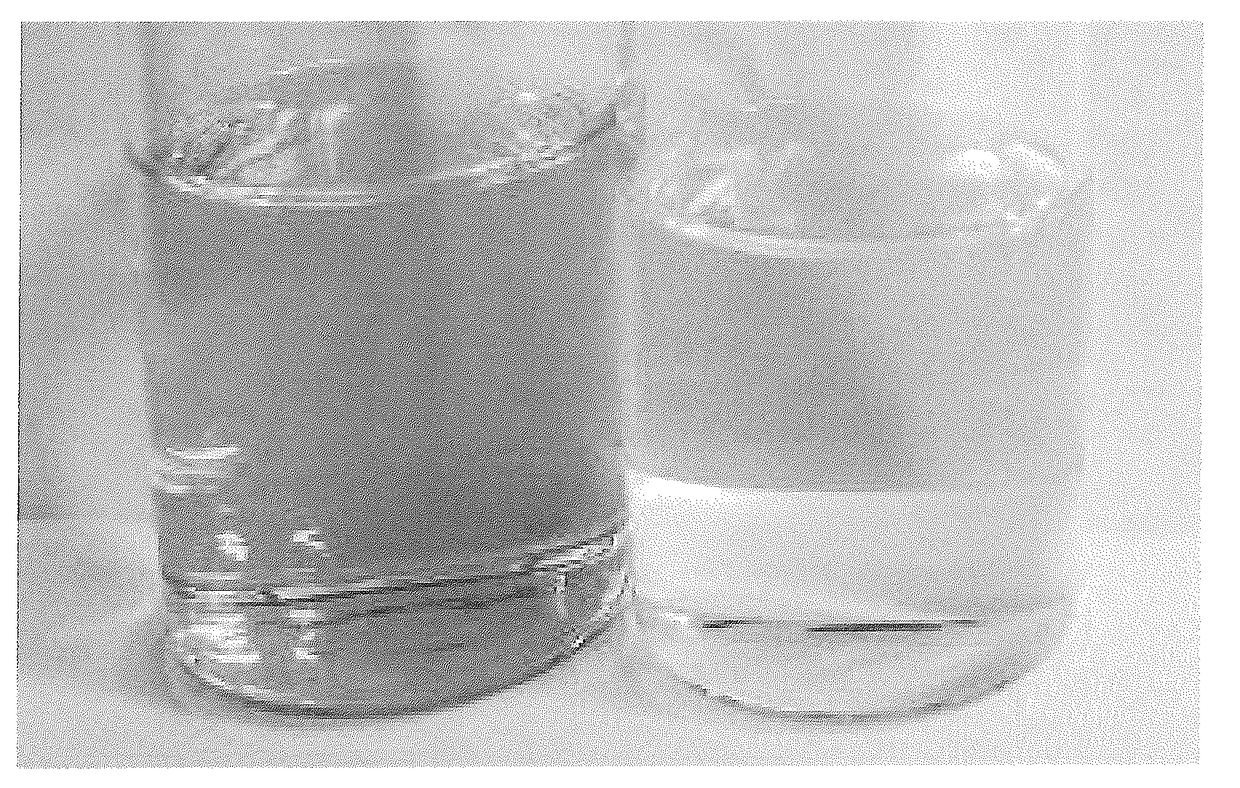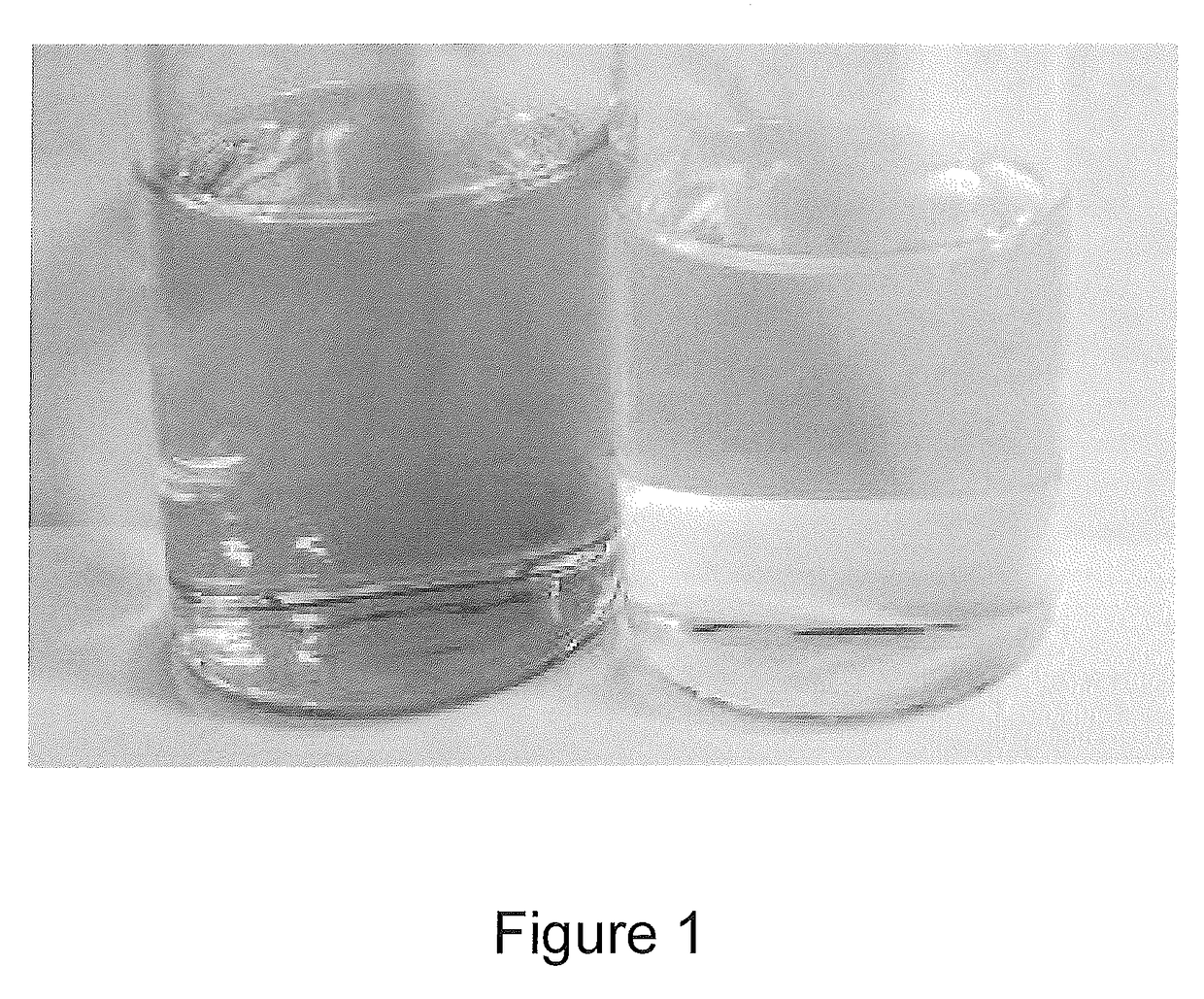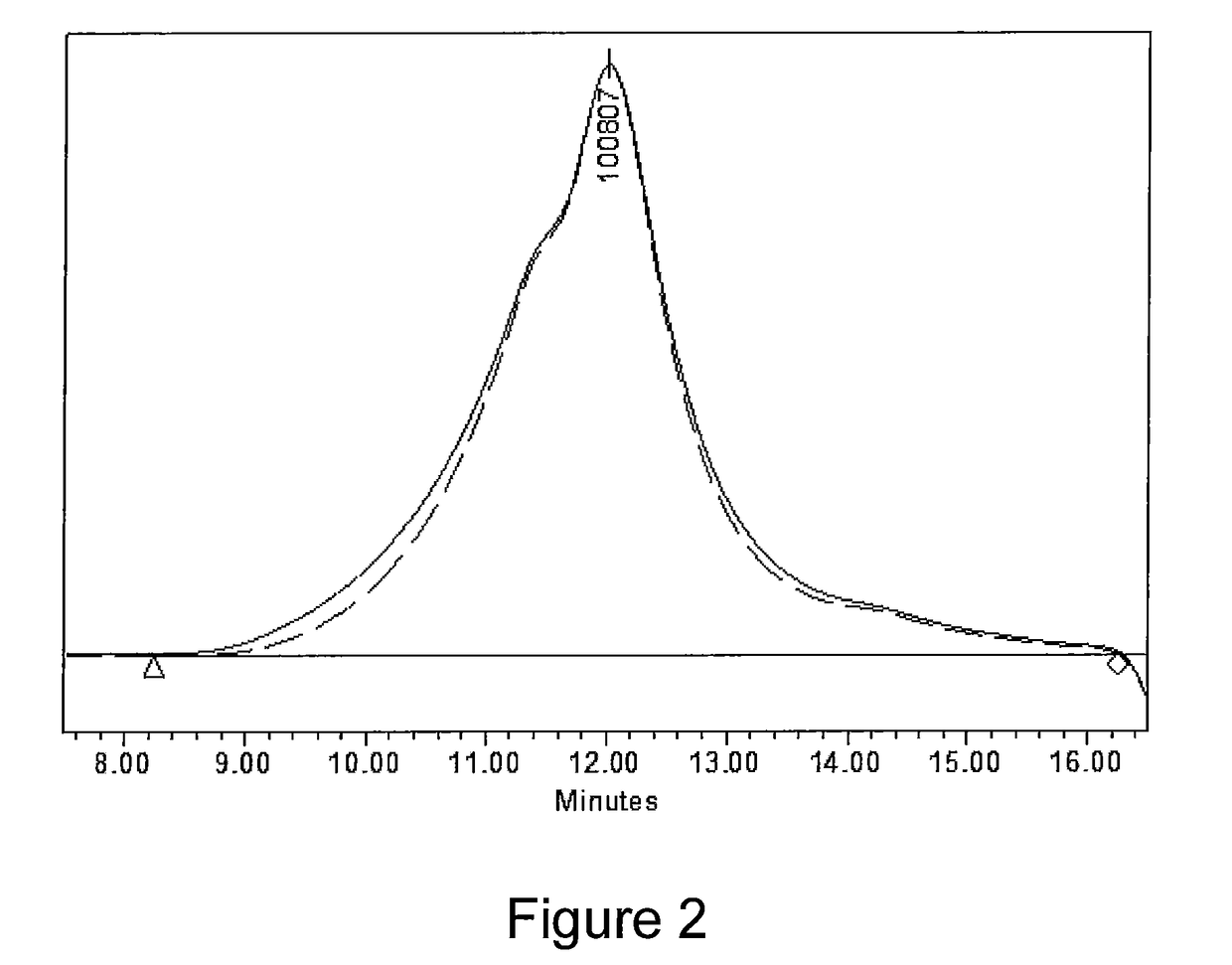Thiocarbonylthio-free raft polymers and the process of making the same
a technology of thiocarbonylthiose and raft polymers, which is applied in the direction of adhesives, etc., can solve the problems of undesirable presence of this chain transfer agent in the end polymer, poor process control and reaction uniformity, and deficiencies in the resulting polymer quality, so as to reduce the odor
- Summary
- Abstract
- Description
- Claims
- Application Information
AI Technical Summary
Benefits of technology
Problems solved by technology
Method used
Image
Examples
example 1
Sample 1 Di-Block Copolymer Synthesis
[0042]Monomer Solution A was formed by mixing methyl acrylate (89.78 g), acrylic acid (18.44 g), and ethylhexyl acrylate (176.52 g) until homogeneous.
[0043]Initiator Solution B was made by mixing Vazo 68 (0.1143 g) and ethyl acetate (80.39 g) until homogeneous.
[0044]Pre-polymer 1 (39.71 g) and ethyl acetate (152.81 g) were added to a 1 L flask. The flask was connected with a mechanical stirrer, a condenser, a nitrogen gas bubbler, Monomer Solution A, and Initiator Solution B feeder. The reaction mixture was then set to reflux under a nitrogen blanket. At reflux, Monomer Solution A and Initiator Solution B were slowly added to the flask over a period of 4 hours. The reaction mixture was allowed to react for two additional hours. Quenching agent, tert-Amyl peroxypivalate (1.71 g), was then added and the reaction mixture was stirred at reflux for additional two hours. The reaction mixture was then cooled down to room temperature. The measured APHA c...
example 2
Treatment Conditions for Diblock Sample 1
[0046]The diblock Sample 1 was treated with varying amounts of H2O2 (50% aq) and conditions (temperature and time) to find an optimal treatment condition.
TABLE 1% H2O2Exposurebased onTtimepolymer(° C.)(hours)Color*APHA1023noneBright yellow2711A16.50238Bright yellow1B16.50558Water-white1C4.97653Water-white1D2.43653.5Faint yellow1E1.08603.5Faint yellow1F0.06604Water-white1G0.24604.5Water-white58*Bright yellow was observed to have the most color, followed by faint yellow, and then water-white.
[0047]It was found that H2O2, even at very low concentration, can cleave the thiocarbonylthio groups from the RAFT polymers. Elevated temperature and exposure time to that temperature can accelerate the cleaving process.
[0048]A side-by-side photograph of the untreated diblock Sample 1 (left) and treated sample G (right) is shown in FIG. 1. The treatment has significantly improved the color of the diblock sample.
[0049]Also, an overlay of the GPC of the untre...
example 3
Sample 2 Di-Block Copolymer Synthesis
Di-Block Synthesis
[0050]Pre-polymer 1 (43.29 g), ethyl acetate (193.62 g), methyl acrylate (97.80 g), acrylic acid (20.19 g), and ethylhexyl acrylate (192.2 g) were added to a 1 L flask. The flask was connected with a mechanical stirrer, condenser, a nitrogen gas bubbler and Initiator Solution C feeder. Initiator Solution C was made by mixing Vazo 68 (0.0860 g) and ethyl acetate (60 g) until homogeneous. The reaction mixture was then set to reflux under nitrogen blanket. At reflux, Initiator Solution C was slowly added to the mixture over a period of 4 hours. The reaction mixture was allowed to react for 2 additional hours. Quenching agent, tert Amyl peroxypivalate (1.86 g), was then added and the reaction mixture was stirred at reflux for two additional hours. The reaction mixture was cooled to room temperature.
[0051]Analysis: GPC: Mw 116755, PDI 3.5, PMMA standard.
PUM
| Property | Measurement | Unit |
|---|---|---|
| Temperature | aaaaa | aaaaa |
| Temperature | aaaaa | aaaaa |
| Temperature | aaaaa | aaaaa |
Abstract
Description
Claims
Application Information
 Login to View More
Login to View More - R&D
- Intellectual Property
- Life Sciences
- Materials
- Tech Scout
- Unparalleled Data Quality
- Higher Quality Content
- 60% Fewer Hallucinations
Browse by: Latest US Patents, China's latest patents, Technical Efficacy Thesaurus, Application Domain, Technology Topic, Popular Technical Reports.
© 2025 PatSnap. All rights reserved.Legal|Privacy policy|Modern Slavery Act Transparency Statement|Sitemap|About US| Contact US: help@patsnap.com



